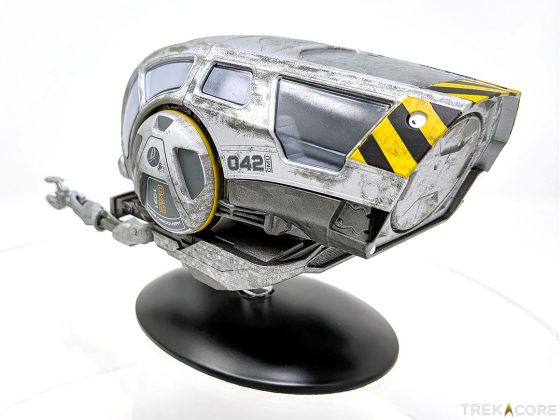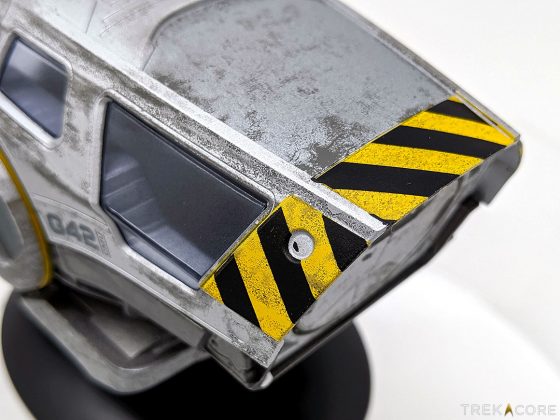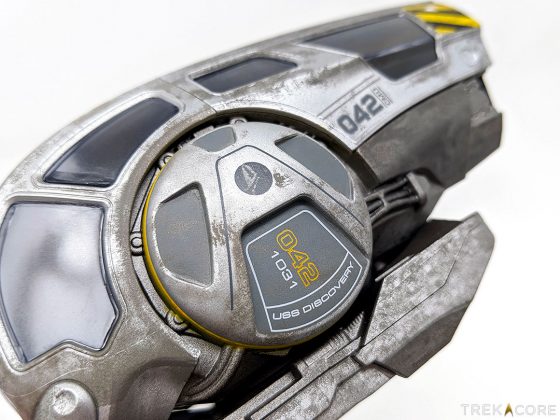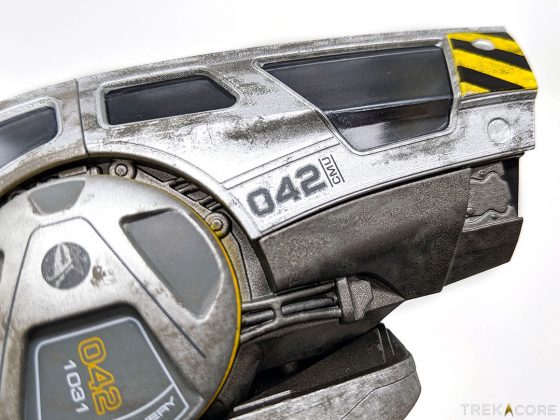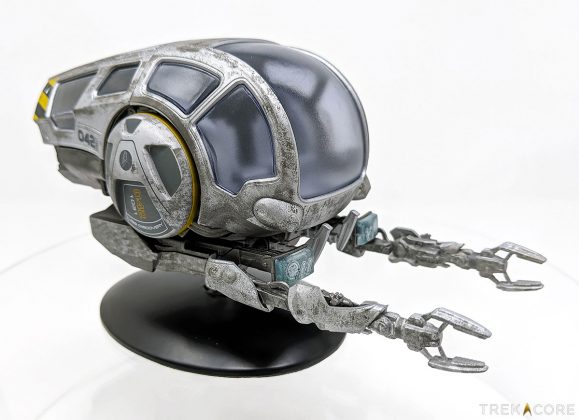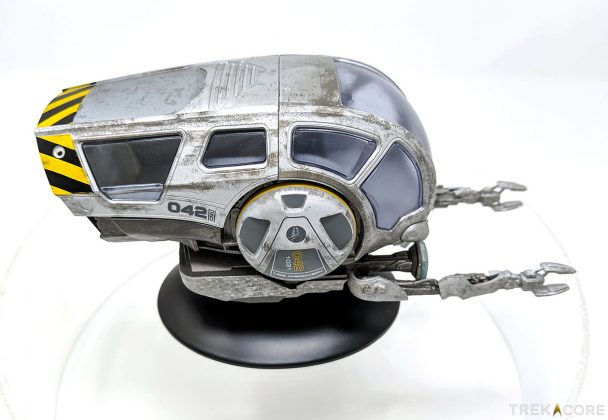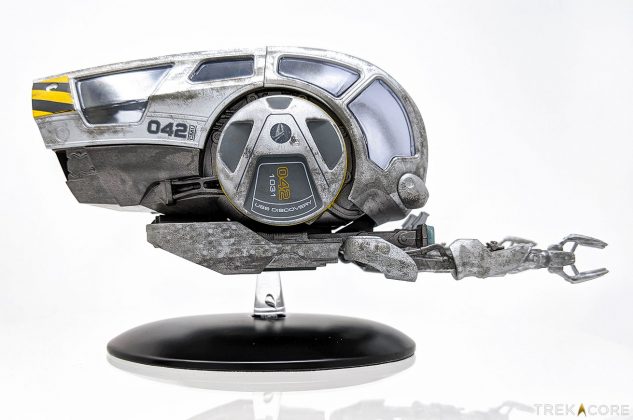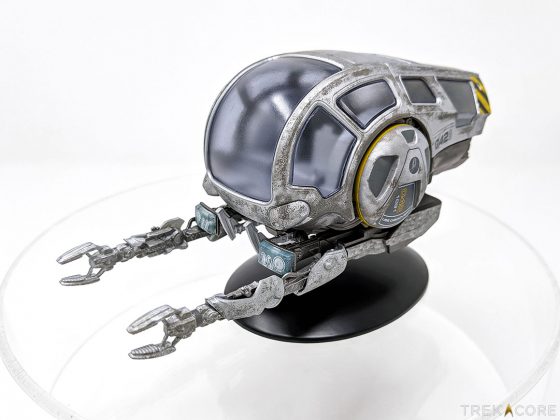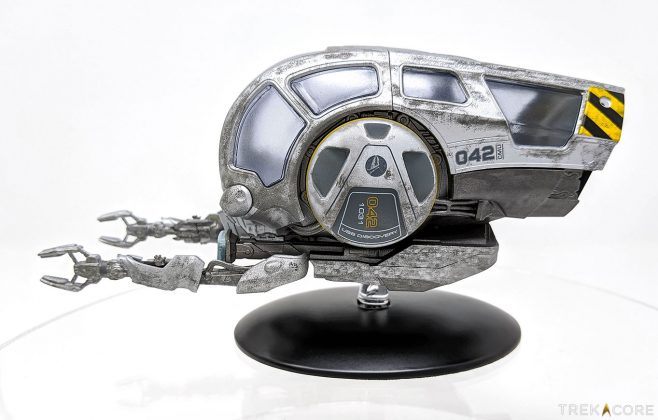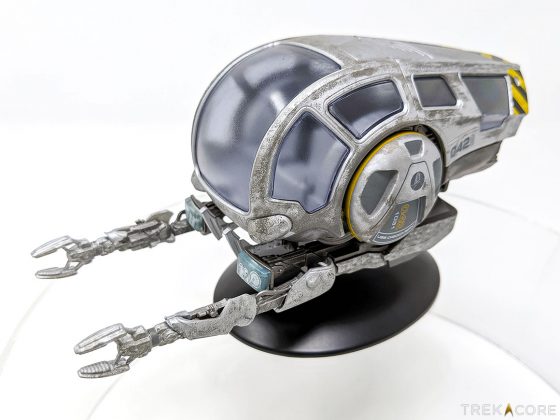We’re back with another look at one of the newer entries in Eaglemoss / Hero Collector’s line of Star Trek starship models, and this time we are headed back to the 23rd Century for the arrival of Star Trek: Discovery’s worker bee service craft!
Debuting in the early moments of “The Vulcan Hello,” the Discovery-era worker bee’s design draws directly from the maintenance pods seen in the classic film 2001: A Space Odyssey — featuring that other spaceship called Discovery — but I see some Blade Runner spinner in there too, and even a dash of Ripley’s P-5000 Work Loader from Aliens.
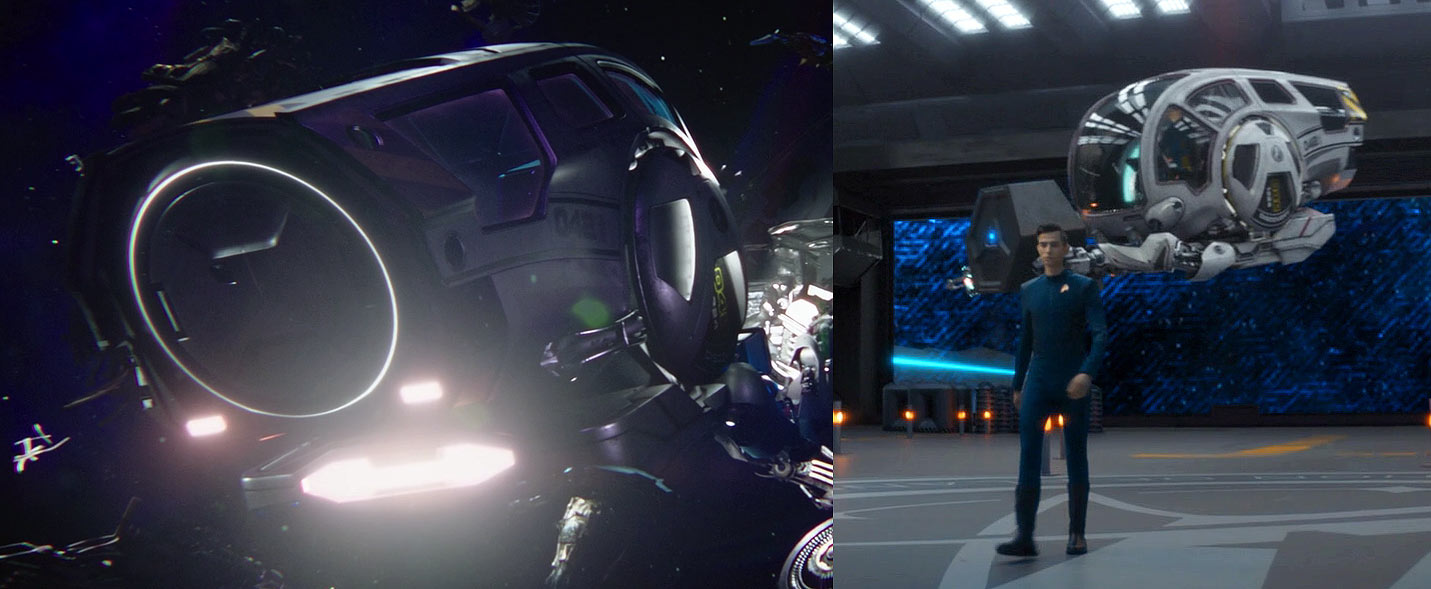
The worker bee’s highly distressed paint scheme certainly contributes to the Blade Runner feel of the model, which is notably over-distressed compared to the digital worker bees we’ve seen on screen. I’d argue, however, that the distressing here adds needed detail to a large model with a lot of smooth, flat surfaces — a ‘cleaner’ worker bee would be less interesting to look at at this scale.
In addition to the distressed metal paint scheme, the worker bee’s exterior paint includes a number of designation labels, all of which are clear and well positioned and indicate that this particular bee is assigned to the USS Discovery — of course, the Shenzhou also had a bee or two in its cargo bay. Finally, the black and yellow caution striping on the trailing edge of the Bee gives a nice pop of color to an otherwise grayscale ship.
The worker bee model feels as if it’s almost entirely made of plastic; the lower hull section is die-cast metal, but most of it is covered by the plastic undercarriage and arm structure, leaving the only exposed metal in the back of the model. That said, the distressed metal paint scheme is very successful and disguises the plastic well.
The model also has quite a few large canopy windows, with significantly more window area than the average ship model. The windows are clouded enough to give a sense of depth and reality to the shuttlepod’s interior, but are still transparent enough to allow you to look inside the craft. The bee’s interior has just the right level of modeling detail for the windows, including the pilot’s and copilot’s seats and details on the side wall bulkheads and back hatch.
Given how close the seats are to the front bubble canopy — and how well you can see them — a bit of color would have provided some nice contrast to the all-gray interior.
The arms are cleanly modeled, and while I wasn’t expecting them to move, the worker bee is a model that would be an especially good choice for articulation. Alternatively, molding one or both of the arms in a slightly bent position instead of having them extend straight out would give a sense of movement to one of the few models of a ship that actually moves.
Like the smaller Star Trek shuttlecraft models, the worker bee’s display stand is a flat platform — rather than a ‘grip’ style like most of the model releases — which makes for a rather delicate mounting scenario. I don’t recommend displaying this one on a surface that’s uneven or likely to get bumped, since the only think holding the model to the display arm is a small ridge of plastic on an otherwise flat square.
At nearly 7 inches long, including extended arms, this model is clearly not to scale with the other shuttlecraft releases in the Official Starships Collection line, but is consistent in size with the other models released as part of the Discovery subscription series.
If you’re a Discovery or shuttlecraft completionist or are looking for one of the more unusual Starfleet designs to display on your shelf, the worker bee is a good choice. It’s available now to collectors in the US for $54.95, and can be ordered in the UK for £34.99.
Be sure to check out all the latest news on the next wave of Official Starships Collection releases out of last weekend’s big panel at the Destination Star Trek convention, and stick around for our next reviews on some of 2019’s models!



